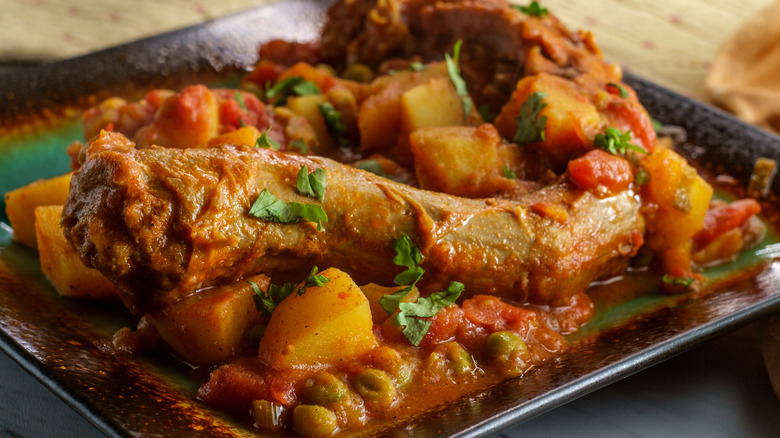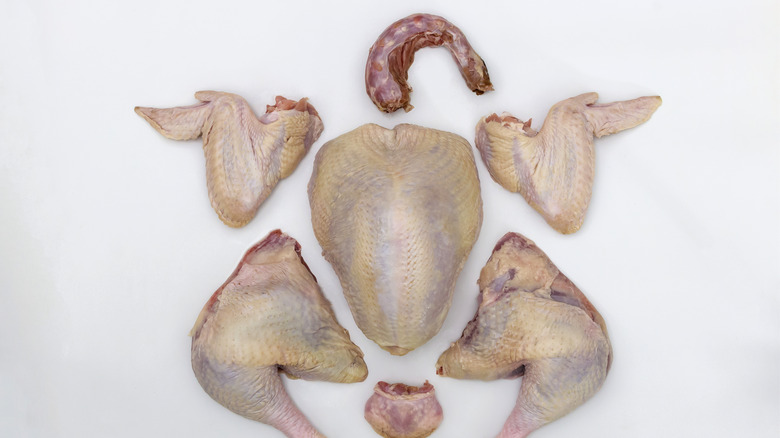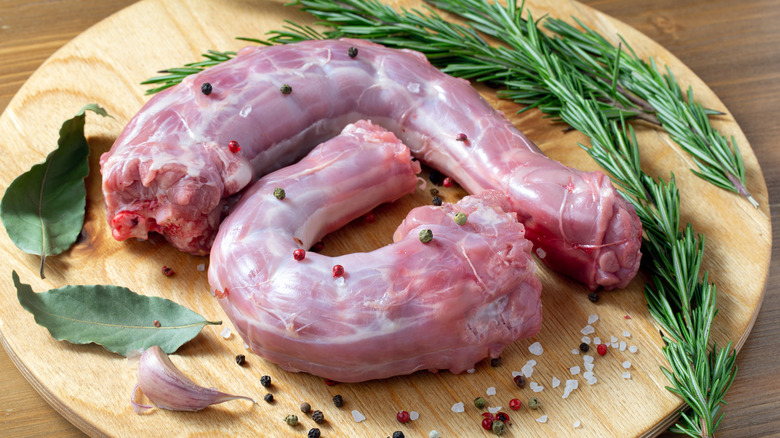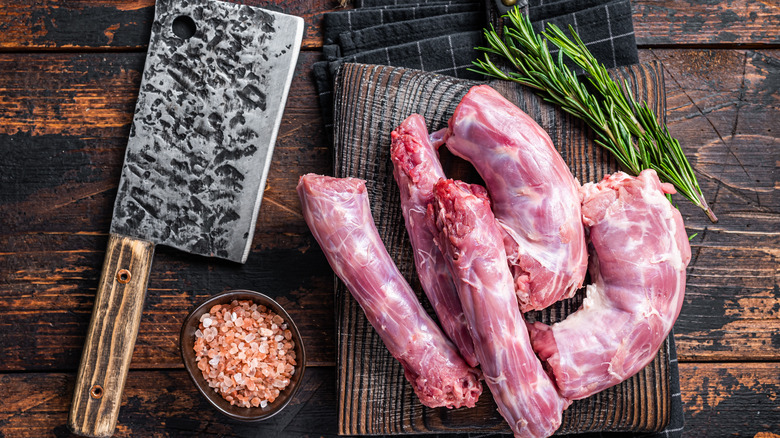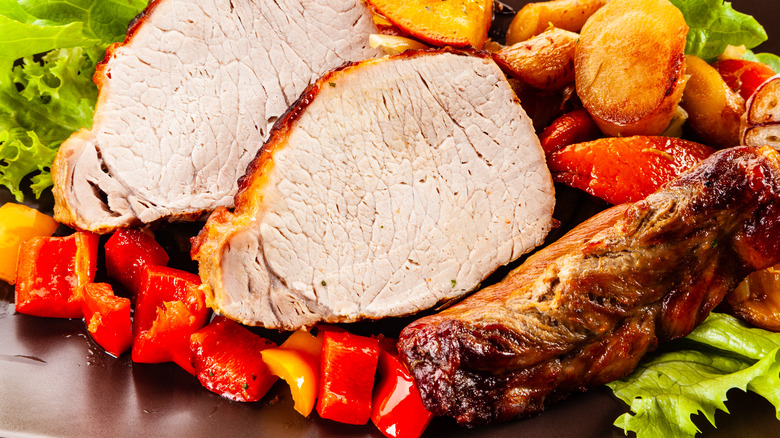What Is Turkey Neck Meat And What's The Best Way To Cook It?
Turkeys are big birds that yield a lot of meat, which is great for celebrations and large crowds. But there's more to a turkey than breast meat, thighs, and drumsticks — some of the most tender, succulent dark meat comes from the turkey neck, which you might be tossing away when preparing the bird to roast.
Turkey necks are an often overlooked and underrated gem in the world of poultry. While they might not be the first thing that comes to mind when you think of turkey, necks are a treasure trove of flavor. Packed with succulent meat and rich in collagen, they are perfect for making savory stocks, broths, and soups. The meat on turkey necks is also exceptionally tender, with a texture that practically falls off the bone when cooked properly. When simmered with aromatic vegetables and herbs, turkey necks release a deep, savory essence that can serve as the foundation for amazing gravies and sauces.
What is turkey neck meat?
Exactly as you'd expect, turkey neck meat comes from the long tube-shaped neck of a turkey, and you'll usually find it tucked inside the whole bird. Made of roughly equal parts meat and bone, it shares a culinary kinship with other bone-adjacent cuts like oxtail, short rib, and shank, boasting a deeper flavor than the white meat of turkey breasts and wings. Unlike those larger muscle groups, turkey neck meat consists of numerous small muscles — once cooked, it transforms into tender, juicy shreds that can be lifted from the bones, making it a versatile addition to a wide range of recipes.
Turkey neck can be used as a shredded addition to beans, soups, and sauteed greens, or served on the bone, smothered in richly flavored sauce. But the culinary magic doesn't end there: The simmering liquid used to cook the turkey neck meat becomes rich bone broth, brimming with nutrients. The broth can be then used for sauces, gravy, and soup with deep turkey essence.
How to cook turkey necks
To prepare turkey necks, start by giving them a thorough rinse and a gentle pat dry, ensuring they're free from any surface impurities. While you're at it, check for any excess flaps of skin or fat, which can be easily trimmed before proceeding. You can slice the necks into smaller segments if you're serving them on the bone, or you can choose to cook them whole, as long as they fit into your pan.
You'll want to lightly season and brown the turkey necks by pan-searing them all around. This step not only enhances their taste but also contributes to the depth of the final dish. Once the necks are golden brown, immerse them in liquid for a slow, low braise, generously flavored with aromatics such as onions and bay leaves. They'll need to simmer for about an hour; you'll know they're ready when the meat begins to easily flake off the bone. Whether you're cooking the necks to use the meat in another recipe or simply to eat as is, the cooking process is the same if you want them to yield tender, flavorful meat.
Where to buy turkey necks
The most obvious source for turkey neck is right inside the cavity of a whole packaged turkey, since most large turkey companies include the neck and giblets (liver, heart, and gizzard) with a turkey. Just take a look into the openings at the head and tail end of the turkey — which you'll likely be doing anyway if you're adding stuffing — to find the parts. If you're buying a farm-fresh turkey, the neck might even be still attached at the head end. A careful cut at the base of the turkey will remove the neck — it should be cooked separately from the body for best results anyway.
If you just have one turkey neck, you've got enough meat to flavor simmered greens or a batch of grits. To serve a larger crowd, you'll need to ask at your butcher counter for bulk turkey necks; as with many specialty cuts of meat, they might need to be ordered specially, so plan ahead! You'll want a minimum of two pounds of neck for four servings.
Nutritional value of turkey necks
Neck meat is a flavorful choice if you want a touch more indulgence while still maintaining the nutritional value of turkey. According to NutritionValue.org, turkey necks share a similar nutrition profile to other dark meat from the bird. Dark turkey meat offers slightly more calories and fat compared to its white meat counterparts; a medium-sized neck (approximately 155 grams) contains roughly 250 calories, slightly more than an equivalent amount of white turkey meat, which boasts a lower fat content.
Much like other poultry, turkey neck meat is also a good source of protein and micronutrients. Turkey delivers a range of several B vitamins, including B3 (niacin), B6 (pyridoxine), and B12 (cobalamin), which are crucial for energy metabolism and the health of the nervous system. Additionally, turkey is a healthy source of monounsaturated and polyunsaturated fats, which can support heart health (via the American Diabetes Association). Its mineral content, including selenium, acts as an antioxidant, while phosphorus contributes to bone health and energy metabolism, making turkey a well-rounded and nutritious protein option.
